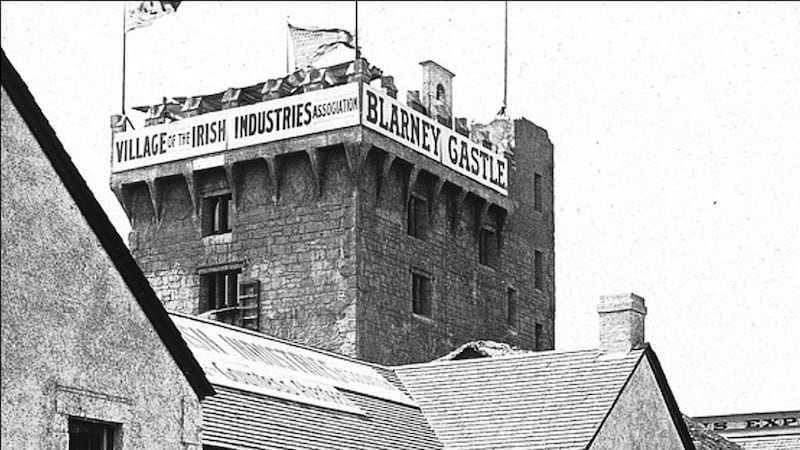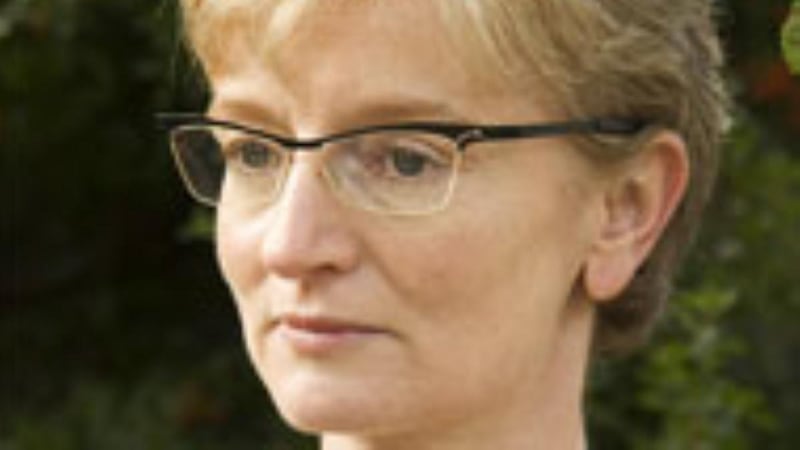People frequently forget that history isn't composed of a grand sweep of happenings, ordained by institutions from on high. While these undoubtedly contribute, history is mostly a litany of people doing stuff. In Éimear O'Connor's Art, Ireland, and the Irish Diaspora, the history we're looking at is the period between 1893 and 1939, and the people doing the stuff include the well-intentioned, the misunderstood, the rather useless and the astoundingly brilliant.
It is an interesting time – 50 years after the Famine, many of the survivors of the coffin ships that left Ireland for the United States had made their names and fortunes in their adopted country, and were keen to reshape the image of Ireland abroad. It is also the period that takes in the struggle for Home Rule, the Irish Civil War and the foundation of the State in 1922.
O'Connor's focus is art, and it's no surprise to find Hugh Lane, Lady Gregory, George Russell and the Yeats family – father, sons and daughters – all making their appearances. But perhaps lesser-known figures are all the more intriguing. There's Ohio-born John Quinn, whose parents hailed from Limerick and Cork, who became an intimate of Lady Gregory and a great supporter of Irish writers, both financially, and by defending James Joyce's Ulysses against obscenity charges in the New York courts.
Or there's Horace Plunkett who spent time ranching cattle in Wyoming, while also helping to found the Irish agricultural co-operative movement. His love for sleeping out under the stars in western America led him to build a roofless sleeping platform at his house, Kilteragh, in Foxrock.
Fake Blarney Stone
Then meet Lady Aberdeen, wife of Ireland's longest-serving lord lieutenant, and her rival, Alice Hart. Both women were so committed to the idea of advancing the cause of Ireland, that when the Chicago World Fair opened in 1893, there was not one, but two rival model Irish villages, established separately by the pair.
This leads to a wealth of amusing anecdotes, including the ersatz Blarney Stone in Lady Aberdeen’s village, which visitors could kiss for 10 cents a head. Alice Hart was not going to take an imposture like that lying down, and obtained an affidavit from Sir George St John Colthurst of Blarney Castle, verifying that the genuine stone was still in situ in Ireland. No one cared to elaborate on the fiction of the stone’s purported eloquence-giving powers.
“It’s a cultural history, rather than an art history,” says O’Connor, whose own background as a biographer drives her interest in people. She is previously the author of a biography of Séan Keating. Keating’s romantic-realist paintings of the Irish War of Independence, and of industrialisation projects such as the hydro-electric power station at Ardnacrusha, demonstrate how art can shape and cement a way of looking at a time and place; just as Paul Henry’s works fix a view of the west of Ireland.
“What interests me,” continues O’Connor, “is the people who will bring you through the story. I wanted the human element. History and culture are up there, on the high line, but it’s the stories of people, with soul and heart, that make it happen.” She goes on to describe the warmth of Lady Gregory as a grandmother.
“People forget that Hugh Lane was her nephew. They forget what it was like for her when he died; and she fought so hard,” she says, referring to the still-continuing controversy over Lane’s bequest of his astonishing collection of Impressionist masterpieces.
O’Connor’s skills as a biographer make Art, Ireland, and the Irish Diaspora a thoroughly grounded reference book, and an exceptionally useful future resource. There were times and places where I wanted more speculation, the kind of elaboration that would make any good academic’s soul blanch. What did people think of the comely maidens, shipped out to populate the rival model villages in Chicago, for example? What did the comely maidens themselves make of it all?
‘Dainty workers’
The book is meticulous in its documentation of what was recorded, so we do know that one correspondent saw that “deft and dainty workers of every branch of Irish cottage industry have been secured” and describes “the pretty faces, no less than their nimble fingers”. But, after a while, I became impatient for some fictions, which O’Connor wisely resists.

"I'm very careful about speculation," she says. "I try not to, and not to go down the route of gossip. For example, there is a lot of speculation that Mainie Jellett and Evie Hone were girlfriends. But unless I had proof, I wouldn't speculate." I had always assumed that the stories about the two early Modernist artists were fact. What, I ask O'Connor, if a knowledge of that "fact" could support people today, perhaps struggling to come to terms with their own sexual identities?
I recall a line about Jellett that I had taken, at the time, to be the ultimate in euphemism, which went something along the lines of “athletic and emancipated, Mainie Jellett never married”. “That’s from Bruce Arnold’s book,” says O’Connor, who has an encyclopaedic knowledge of her subject and excellent recall. “But,” she says, returning to the topic, “if it’s a true and honest knowledge that supports someone, then yes. But I don’t like gossip and celebrity culture. It has to be based on knowledge. Perhaps,” she muses, “I should have been a barrister.”
Lady Aberdeen and Alice Hart's intentions for their Irish villages, and for their other endeavours, were to raise the profile of Irish cottage industries, both to provide employment, but also to challenge stereotypes of lazy, drunken wastrels, with a view to demonstrating that the Irish were, after all, capable of Home Rule. At the inauguration of the Irish Industries Association in 1886, held at the Viceregal Lodge in Dublin, Lady Aberdeen dressed in a costume "inspired" by Irish princesses of the 13th century, and presented her children clad as exceptionally clean Irish "peasants".
Scrubbed-up natives
It is an approach that gives pause. Today, it’s easy to wonder how a nation may have to prove itself capable of self-governing, particularly to those who have been responsible for thwarting and stunting its own civic and cultural growth through colonialism; and yet it is a condition that persists. Patronage is, at its heart, deeply patronising and, however well-intentioned, it is no substitute for true equality.
Thinking about crowds gathering to view picturesque and well-scrubbed natives at their spinning wheels and weaving looms in Chicago raises the hackles and yet, just 14 years later in 1907, when the vast Irish International Exhibition took over Herbert Park, and attracted more than 2½ million visitors, the most popular spot was the Somali Village, situated in the amusements section. It drew its “exhibits” from what was then British Somalia and The Irish Times reported that “the natives are to be seen at work […] while the children, of whom there are quite a number […] are all lively in spirits and pleasing in appearance”.
A further newspaper report from The Irish Times of May 14th, 1907, not quoted by O’Connor, notes that “with the exception of slight colds, which a few have contracted on account of the recent severe weather, the Somalis are in good health. There have been no deaths . . .” “Can you imagine?” asks O’Connor. “Everyone thought that that was all right. Even Sinn Féin who were fighting for getting out from under British rule.”

Those vast fairs took on educational roles in the days before mass travel and immediate communications. Yet the worlds they portrayed were exoticised, and seen through the colonial lens of the organisers. And it still happens today: visitors to Kenya, for example, can visit model villages, “to see how the Masai really live”. “It’s amazing what people take for normal,” says O’Connor as we consider it.
Vast sweep
"You like to think with your work that you're encouraging people to think about things like that," she continues. "You write something, but you also try not to force ideas. I do it gently, but the book is about women too. I don't shove my feminism down people's throats, but I do write about women where I think it's appropriate, and there are a great number of them." She talks about Marjorie Organ, Frances Hubbard Flaherty and Helen Hackett, whose diaries enliven a whole section of this vast sweep of a book.
Of Austrian descent, Helen Plechner married Irish emigre E Byrne Hackett, and discovered a love of Irish arts. Her recordings of a trip to Ireland to meet artists in connection with her New York exhibitions, bring the time and place to vivid life. “To listen to AE is to hear monastery bells, softly pealing,” she writes.
"I'm very proud of the book," says O'Connor, who, in January of next year, takes up the directorship of the Tyrone Guthrie Centre at Annaghmakerrig. It is a role that will put her at the heart of another, contemporary creative milieu, a place where more artistic history is made, simply, as always, by people doing stuff.
Art, Ireland, and the Irish Diaspora by Éimear O’Connor is published by the Irish Academic Press, €35













